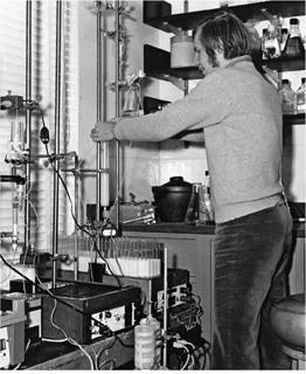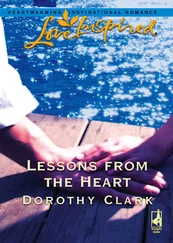James Watson - AVOID BORING PEOPLE - Lessons from a Life in Science
Здесь есть возможность читать онлайн «James Watson - AVOID BORING PEOPLE - Lessons from a Life in Science» весь текст электронной книги совершенно бесплатно (целиком полную версию без сокращений). В некоторых случаях можно слушать аудио, скачать через торрент в формате fb2 и присутствует краткое содержание. Жанр: Биографии и Мемуары. Описание произведения, (предисловие) а так же отзывы посетителей доступны на портале библиотеки ЛибКат.
- Название:AVOID BORING PEOPLE: Lessons from a Life in Science
- Автор:
- Жанр:
- Год:неизвестен
- ISBN:нет данных
- Рейтинг книги:5 / 5. Голосов: 1
-
Избранное:Добавить в избранное
- Отзывы:
-
Ваша оценка:
- 100
- 1
- 2
- 3
- 4
- 5
AVOID BORING PEOPLE: Lessons from a Life in Science: краткое содержание, описание и аннотация
Предлагаем к чтению аннотацию, описание, краткое содержание или предисловие (зависит от того, что написал сам автор книги «AVOID BORING PEOPLE: Lessons from a Life in Science»). Если вы не нашли необходимую информацию о книге — напишите в комментариях, мы постараемся отыскать её.
AVOID BORING PEOPLE: Lessons from a Life in Science — читать онлайн бесплатно полную книгу (весь текст) целиком
Ниже представлен текст книги, разбитый по страницам. Система сохранения места последней прочитанной страницы, позволяет с удобством читать онлайн бесплатно книгу «AVOID BORING PEOPLE: Lessons from a Life in Science», без необходимости каждый раз заново искать на чём Вы остановились. Поставьте закладку, и сможете в любой момент перейти на страницу, на которой закончили чтение.
Интервал:
Закладка:
Even before Joe Sambrook's arrival, I knew the success of his tumor virus group would require constructing new lab facilities to supplement the space he was to have in the James Lab. Initially I thought $60,000 would cover the costs of an annex on its south side. So Liz and I flew down to Long Island from Cambridge to seek this sum from the pharmaceutical heir Carlton Palmer, whose grand Tudor-style home was on nearby Center Island. At the end of the Sunday lunch, hosted by our neighbor, the Lab trustee and lymphoma expert Bayard Clark-son, I was told that I would have to find fifty-nine more donors. The Lab still badly needed an angel, as I soon thereafter told a reporter for the Long Islander, the local Huntington weekly founded by Walt Whitman. To my delight, the resulting article generated a call to me from the former Pfizer executive John Davenport, who had a summer home near Lido Beach on the South Shore. While still with Pfizer, he had run an RNA tumor virus effort and liked what I proposed to do at Cold Spring Harbor. Soon he and Ed Pulling joined Liz and me for a home-cooked lunch at Osterhout, after which I gave John a tour of the science then going on at Cold Spring Harbor. Less than a week passed before Davenport took me to lunch at the University Club in New
York City, where he told me that he was transferring $100,000 worth of Pfizer shares to the Lab. Though our new building's costs had risen to $200,000, I had by then raised the rest. Construction would start as soon as the winter snows melted.Almost all the next academic year, Liz and I lived in Cold Spring Harbor, much enjoying views of the inner harbor through the big eastern-facing windows of our new white cedar house. After flying to Florence for the November 1969 meeting on RNA polymerase, we drove to Venice and from there traveled by train to a big resort hotel on Lake Constance. There a meeting was held to further advance Leo Szilard's scheme for a European molecular biology research and teaching institution. From nearby Zurich we flew to London, going up to Cambridge so Francis and Liz could meet. The Double Helix no longer upset him since he realized that it enhanced, not diminished, his reputation. Back in Cold Spring Harbor for the holidays, we eagerly awaited the arrival of Rufus Robert Watson in late February 1970.
In May, Nathan Pusey announced that after eighteen years as Harvard's president he would be stepping down in June of the following year. No one was surprised. His handling of the occupation of University Hall, while perfectly legal, had been hugely unwise, dividing the faculty into two angry camps that had no hope of being reconciled unless he went away. He would, in due course, move to New York City to become president of the Andrew W. Mellon Foundation. After raising piles of cash that let Harvard expand in many directions, he was now to have the far easier task of giving it away. Paul Doty and I could not help but note that his only obvious failure at fund-raising was in not finding a major donor for the proposed building to house his new Department of Biochemistry and Molecular Biology.
In the summer of 1970, for the first time in its history Cold Spring Harbor did not play host to visitors conducting research of their own choosing. No free space remained to house them or let them carry on meaningful research. Instead we used our resources to start a new course on the molecular biology and genetics of yeast. It would allow scientists interested in the essence of eukaryotic cells to learn the powers of yeast genetics. In the fall, we used a $30,000 donation from Manny Delbrück to begin renovating the derelict wooden Wawepex
lab into a dormitory for sixteen summer students. Its beds would let us start a summer neurobiology course program. A new grant of almost $500,000 from the Sloan Foundation was used in part to cover the costs of renovating the top floor of the 1912 Animal House into lab and lecture space for neurobiology.With the completion of the James Annex in January 1971, our tumor virus group came into its own. No longer did we have to play second fiddle to equivalent endeavors at the Salk Institute. Working now with Joe Sambrook were the Caltech-trained Phil Sharp and Ulf Pettersson from Uppsala, who brought to us adenovirus tumor research. Both came as super postdocs and soon became bona fide members of the James Lab staff. To support their independent activities as well as new cancer research efforts in space to be vacated by Al Hershey's impending retirement, Joe wrote up a big grant proposal to expand our NCI funding to $1 million per year. Later, site visitors gave it top priority, allowing our Cancer Center to come into existence as of January 1,1972.
Even larger sums for research would soon become available. Richard Nixon had just enthusiastically signed the National Cancer Act in response to recommendations by the philanthropist Mary Lasker's Citizens’ Committee for the Conquest of Cancer. Boldly it was proclaimed that if we can send men to the moon, we should be able to cure cancer. Though I did not believe there was sound logic in relating the two feats, I felt strongly that bigger infusions of federal monies were needed to let tumor virus systems point us toward the mutant genes that were known to cause cancer. So I spoke before the Citizens’ Cancer Committee at one of its first meetings in the summer of 1970.
Under the “Conquest of Cancer” legislation, the president appointed not only the NCI director but also members of a new National Cancer Advisory Board, among which I was included for a two-year term to begin in March 1972. Before that, I had been advising NCI as a member of its Cancer Center Study Section. Directing the NCI then was the bureaucrat Carl Merrill, mindlessly generating a complex flow chart for the cure of cancer modeled after Admiral Rickover's successful Polaris missile program. The one such planning session that I attended in Washington accomplished nothing. I was hoping my
forthcoming National Cancer Advisory Board meetings would do more good. The several other pure scientists on the board also appreciated nonsense for what it was. Its clinical oncologists, however, wanted to create more comprehensive cancer centers. But such centers, already operating in New York City, Buffalo, and Houston, had shown no capacity to cure most adult cancers; I saw no reason for more of them other than to create more good-looking places to die. Only inspired science, not public relations, could lead to the knowledge that might let us finally cure most cancers. A real role lay ahead for our lab.
Ulf Pettersson in the lab at Cold Spring Harbor, December 1971

Joe Sambrook at CSHL in 1973

Jane Flint, Terri Grodzicker, Phil Sharp, and Joe Sambrook at CSHL in 1973
Remembered Lessons
1. Accept leadership challenges before
your academic career peaks
By forty, I was the right age to begin directing a major research institution. My ever-increasing focus on cancer was best fulfilled by presiding over seasoned professionals, as opposed to graduate students and beginning postdocs. So I consciously made the decision not to run a research group at Cold Spring Harbor. This allowed me to focus my efforts first on recruiting scientists who cared as much as I did about the biology of cancer, then on finding the funding they needed to make their ideas work.
Читать дальшеИнтервал:
Закладка:
Похожие книги на «AVOID BORING PEOPLE: Lessons from a Life in Science»
Представляем Вашему вниманию похожие книги на «AVOID BORING PEOPLE: Lessons from a Life in Science» списком для выбора. Мы отобрали схожую по названию и смыслу литературу в надежде предоставить читателям больше вариантов отыскать новые, интересные, ещё непрочитанные произведения.
Обсуждение, отзывы о книге «AVOID BORING PEOPLE: Lessons from a Life in Science» и просто собственные мнения читателей. Оставьте ваши комментарии, напишите, что Вы думаете о произведении, его смысле или главных героях. Укажите что конкретно понравилось, а что нет, и почему Вы так считаете.












